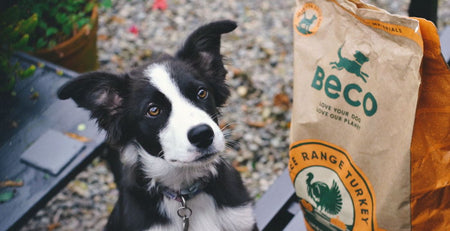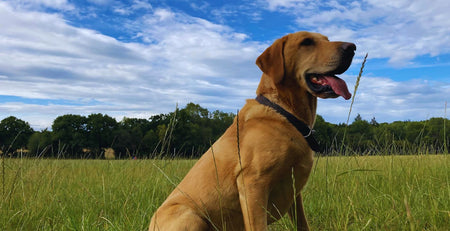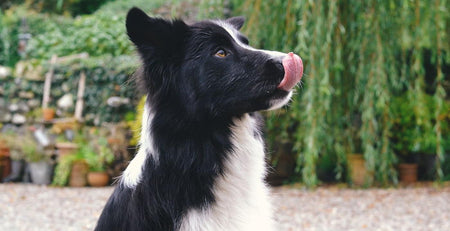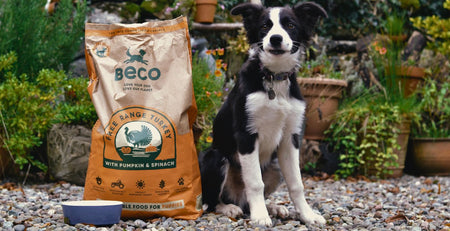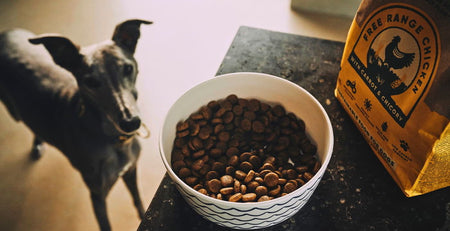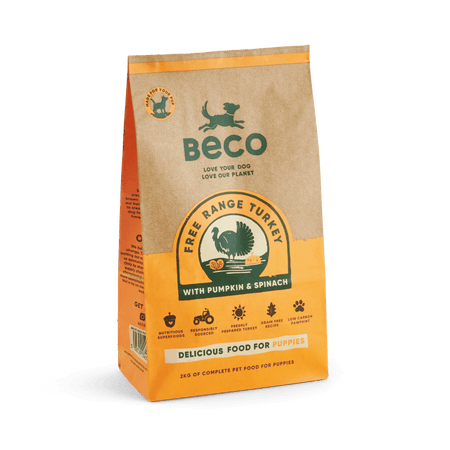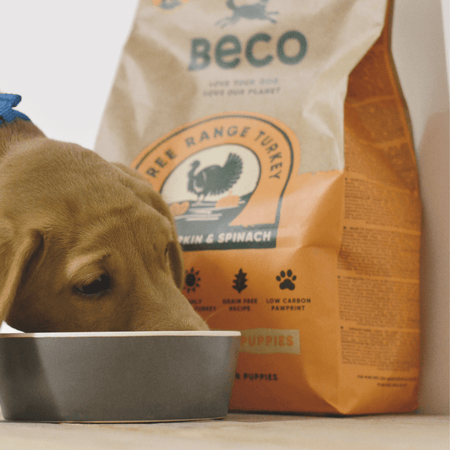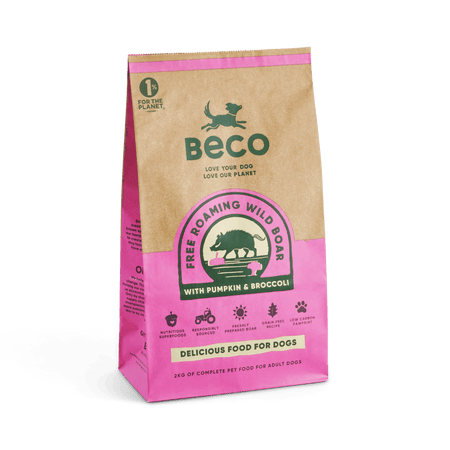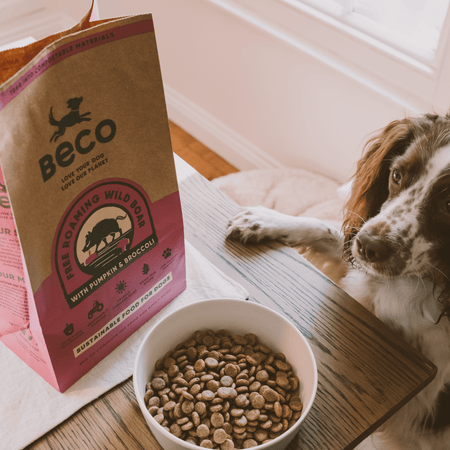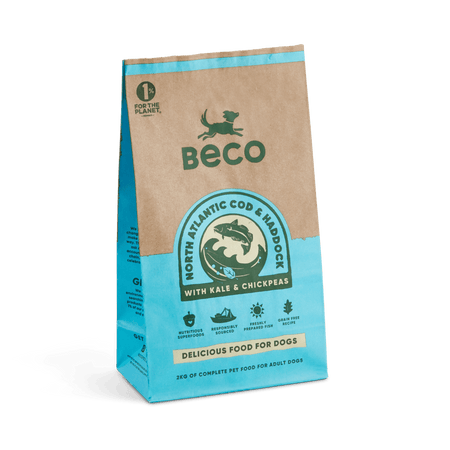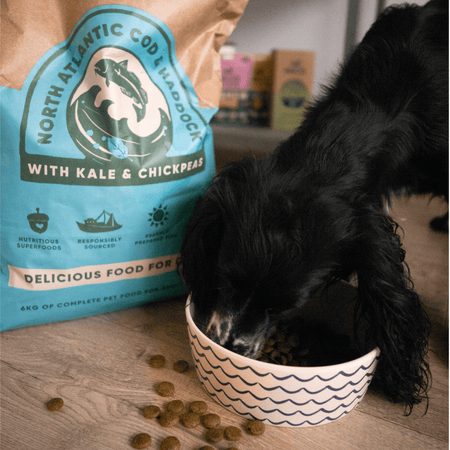Welcoming a new puppy into your home is an exciting experience. During the first 48 hours with a new puppy, you're setting the foundation for a lifelong relationship. But amidst all that joy, it's essential to be mindful of your puppy's diet, including how you handle switching dog food.
Crucially, it’s important that you try to avoid switching your puppy or dog food too quickly. If you don’t, then you might be met with unwanted consequences, with common symptoms of changing puppy food too quickly including both diarrhoea and vomiting. Fortunately, if you follow the steps outlined below, that shouldn’t be an issue.
Key Takeaways
-
Symptoms of changing puppy food too quickly (or any dog food for that matter) include diarrhoea, vomiting, loss of appetite and regurgitation.
The balance of gut bacteria can be disrupted by dietary changes, hence the gastrointestinal upset. This can be mitigated with the use of a vet-approved probiotic.
Both puppies and mature dogs can require more monitoring, a cautious approach and a transition over a longer period of time. Consult your vet if you’re unsure.
As a general rule, the appropriate time period when transitioning puppy/dog food is over the course of one week.
If symptoms (like vomiting) develop and persist after changing dog food, typically for more than three days, then this is a cause for urgent veterinary attention
The Importance of a Gradual Transition
Transitioning to a new diet abruptly can cause gastrointestinal upset in dogs and puppies. A gradual change over 5-7 days allows your pet's system to adjust effectively. During this transition, closely monitor your pet's behaviour and stool to gauge how well they're handling the change
What Happens When Changing Dog Food Too Quickly?
Changing dog food too quickly can lead to a series of symptoms. They may seem mild at first, but if ignored, they can worsen and lead to more severe health problems.
Symptoms in Dogs
In dogs, the common symptoms of changing dog food too quickly include:
Diarrhoea
Vomiting
Regurgitation
Changes in stool colour
Symptoms in Puppies
Puppies, with their sensitive digestive systems, may display symptoms such as:
- Vomiting
- Diarrhoea
- Loss of appetite
The Role of Digestive Flora in Dietary Changes
Both puppies and dogs have a complex ecosystem of bacteria in their digestive tracts, commonly referred to as gut flora. These bacteria play a crucial role in the digestion and absorption of nutrients. A sudden change in your pet's diet disrupts this balance, leading to gastrointestinal issues like diarrhoea or vomiting.
𝐢 Restoring Gut Flora Balance
Probiotics, which are beneficial bacteria, can help restore balance to your pet's gut flora. When introducing a new diet, consider supplementing with a veterinary-approved probiotic. This can ease the transition and help prevent digestive upsets.
The Impact of Age and Health Conditions on Dietary Changes

The age and health of your pet play an essential role in determining their ability to handle dietary changes. Older dogs, puppies, and dogs with certain health conditions may need more gradual transitions and closer monitoring.
Senior Dogs and Dietary Changes
Older dogs may have more sensitive stomachs and may require a longer transition period when changing foods. In some cases, they may also need specific diets tailored to their health needs.
Puppies and Dietary Changes
Puppies have delicate digestive systems and need special puppy food. If changing their diet, it should be done gradually, and the new food should meet all their nutritional needs.
How Quickly Can You Switch Puppy Food?
Ideally, a food transition should be gradual, happening over a week or longer. This is especially important for dogs with sensitive stomachs.
Suggested Transition Schedule
Here’s a general guide to transitioning your pet's food:
| DAY | OLD FOOD | NEW FOOD |
|---|---|---|
| 1 - 2 | 75% | 25% |
| 3 - 4 | 50% | 50% |
| 5 - 6 | 25% | 75% |
| 7+ | 0% | 100% |
This is just a guide. The speed of transition can be adjusted based on your pet's reaction
Understanding the Ingredients in Dog Food
The quality of ingredients in dog food plays a significant role in how your pet reacts to a new diet. Some pets may be intolerant or allergic to certain ingredients. If your pet has an adverse reaction to a new diet, it's crucial to understand the food's composition.
Common Ingredients to Watch Out For

Grains: Some dogs might be sensitive to grains like wheat and corn.
Protein Sources: Some dogs may be allergic to specific proteins like chicken or beef.
Artificial Additives: Some pets can react negatively to artificial colours, flavours, or preservatives.
Common Mistakes When Switching Dog Food
While most pet owners have their pets' best interests at heart, there can be mistakes made when transitioning to a new diet. Here are a few common ones to avoid.
Switching Too Many Foods at Once
Try to introduce one food at a time to your pet's diet. This will help you monitor the reaction to each new food and identify any potential problems.
Ignoring Portion Sizes
Different dog foods can have varying nutritional densities. Make sure you adjust the portion size according to the feeding guidelines of the new food.
What Happens if You Change Puppy Food and He Has Diarrhoea?
As per advice from the veterinary charity PDSA, “most pets suffering from diarrhoea due to a change in food will recover within 1-3 days”. If it doesn't subside within 3-4 days, it's crucial to consult a vet.
𝐢 How Long Does A Dog Usually Have Diarrhoea After Changing Food?
On average, diarrhoea can last for 1-3 days following a dietary change. However, every dog's reaction will differ. If the symptoms persist for more than three days, seek veterinary help.
Signs of Severe Dietary Upset
While symptoms like diarrhoea or vomiting can be common during a food transition, it's important to watch for signs of a more serious issue. Persistent diarrhoea, severe vomiting, blood in stool or vomit, lethargy, and significant weight loss are all causes for immediate veterinary attention.
Emergency Vet Care
In case of severe dietary upset, it's crucial to take your pet to a vet immediately. Never attempt to treat severe symptoms at home without consulting a vet first. Your pet might need medications or even hospitalisation in severe cases.
Holistic Approaches to Dietary Transitions
While veterinary care is essential, some holistic practices can support a smooth dietary transition for your pet.
Regular Exercise
Regular exercise aids in digestion and can help your pet adjust to a new diet. It also helps to maintain a healthy weight, which is beneficial for overall health.
Providing a Calm Environment
Stress can exacerbate digestive issues. Maintaining a calm, quiet environment can help your pet adjust to new foods more easily.
The Influence of Breed and Size on Dietary Changes
Different dog breeds and sizes may react differently to dietary changes. Large breeds, for instance, may have different nutritional needs compared to small breeds.
Large Breeds and Dietary Changes
Large breed dogs may need diets that support joint health and controlled growth. These dogs may also require a slower transition to prevent gastrointestinal issues.
Small Breeds and Dietary Changes
Small breeds have a faster metabolism and may need a diet higher in calories. They might also prefer smaller kibble sizes for easier consumption.
Understanding Food Labels
When switching your dog's food, it's essential to understand how to read pet food labels. This can help you choose a diet that meets your dog's nutritional needs.
The Ingredient List
Ingredients are listed in descending order by weight. The first ingredient is the one that's present in the largest amount. Look for a source of animal protein as the first ingredient.
𝐢 Nutritional Adequacy Statement
This statement tells you if the food provides complete and balanced nutrition. It may also indicate which life stages or health conditions the food is suitable for.
What To Do If You Change Puppy Food And He Has Diarrhoea?
If your puppy develops diarrhoea after a food switch, try reverting to the old food. Then, reintroduce the new food more gradually. If symptoms persist, it's best to consult a vet.
Vet Tips for Switching Dog Food Without Mixing
In situations where it's impossible to mix the old and new food, there are a few strategies to minimise the potential side effects:
Introduce the new food in small portions
Monitor your pet closely for any adverse reactions
Keep them hydrated, as diarrhoea can lead to dehydration
Consult with a vet before making the change
Final Thoughts
The first 48 hours with a new puppy can be an exhilarating yet challenging time. It's paramount to remember the importance of dietary transitions in maintaining your pet's health, because changing puppy food too quickly can result in unwanted symptoms. So, follow the advice above and then, if ever you’re in doubt, consult your vet before making changes to your pet's diet.
Even if you change your dog’s diet at the appropriate rate, it’s always going to turn out better when you switch to high-quality food, and that’s where we come in here at Beco. Check out our range of delicious, nutritious kibble and wet food, today!


